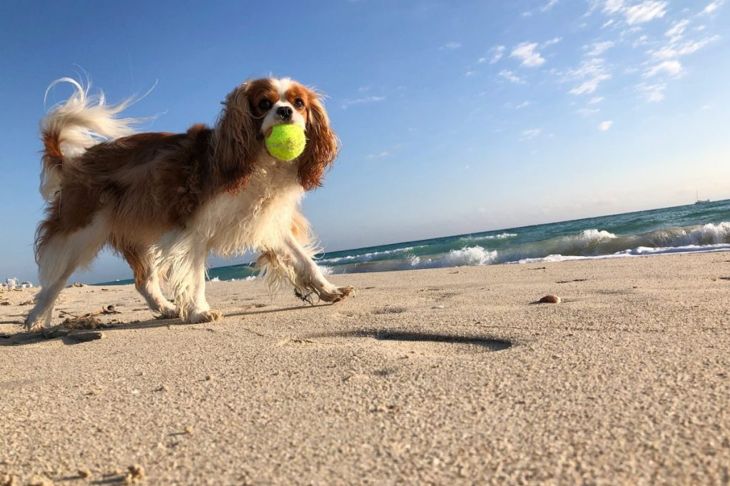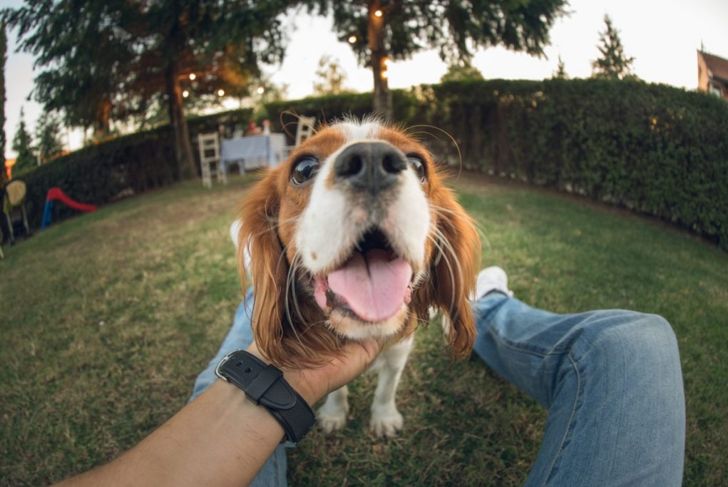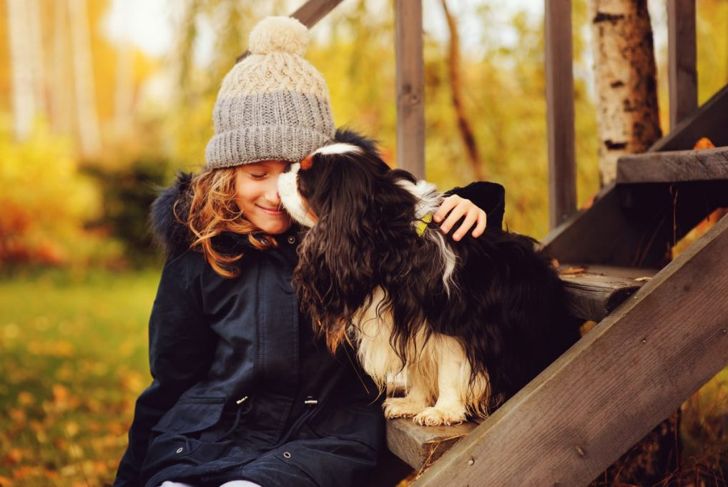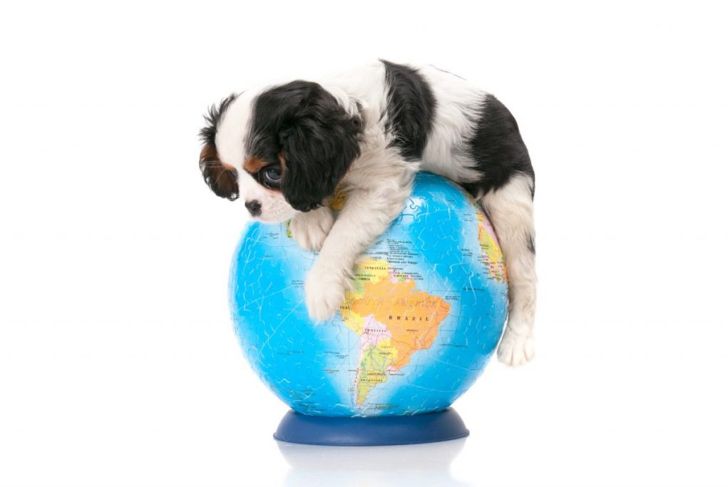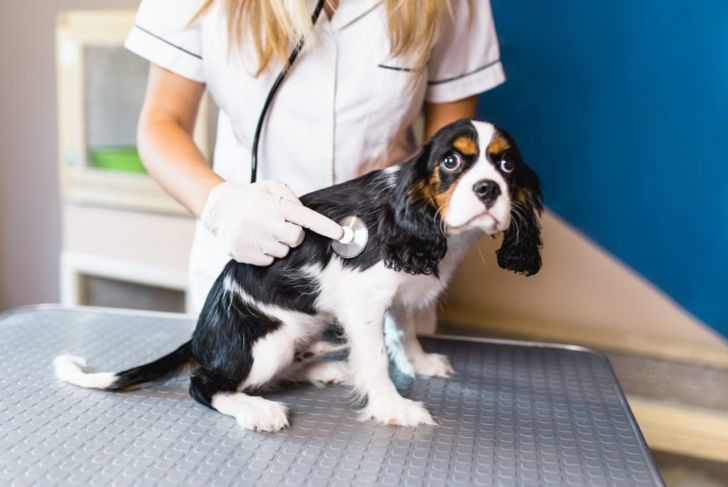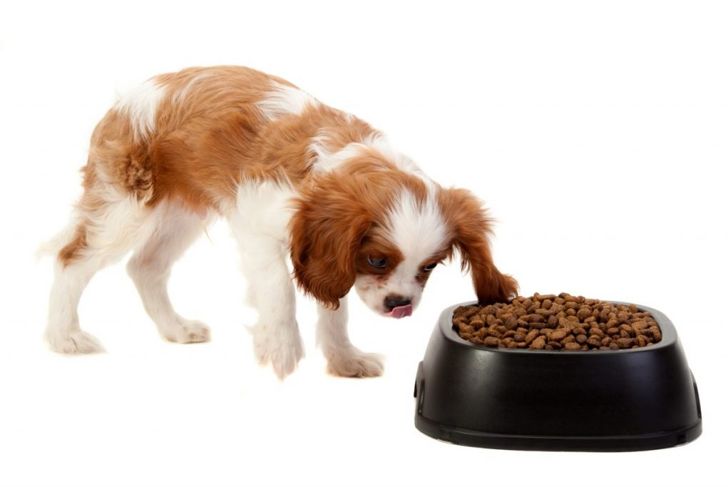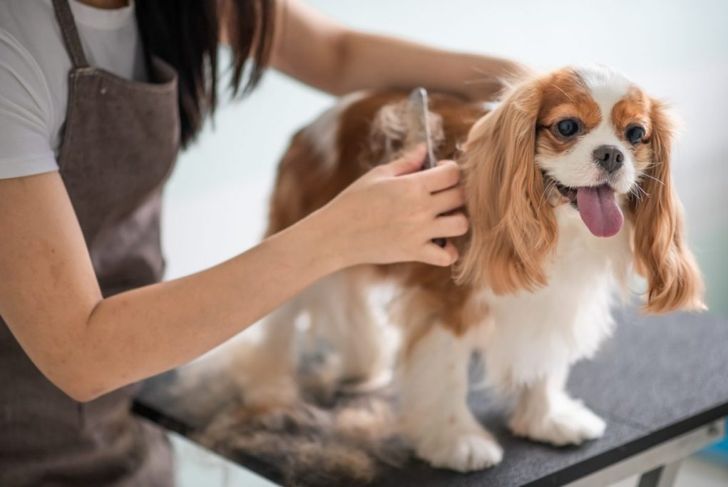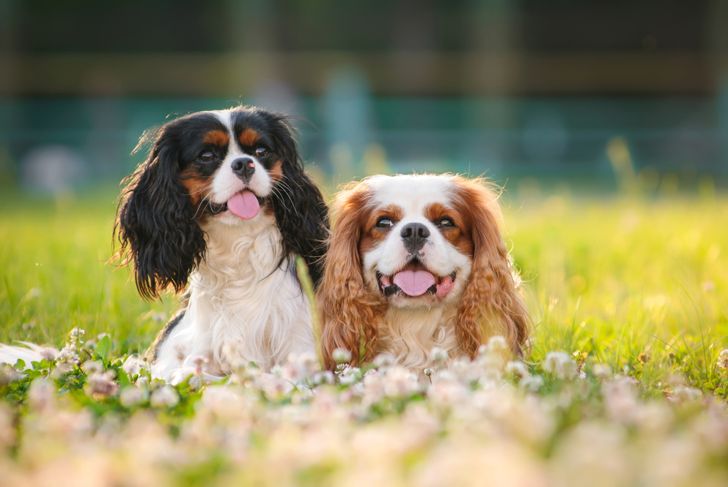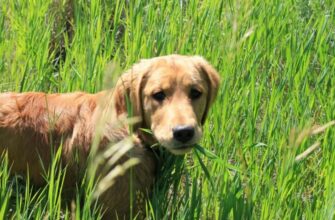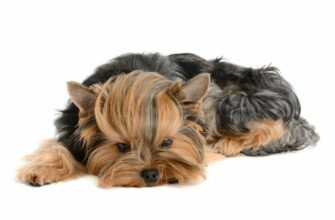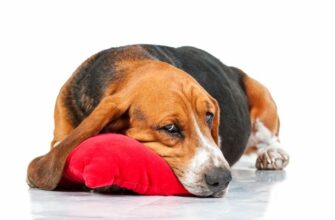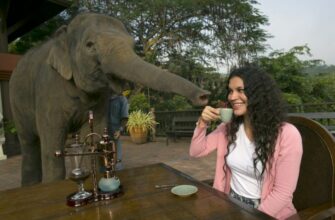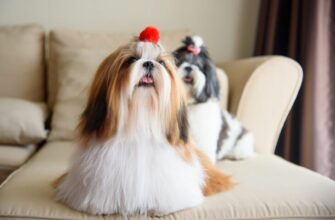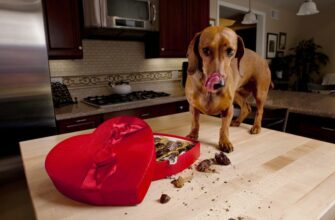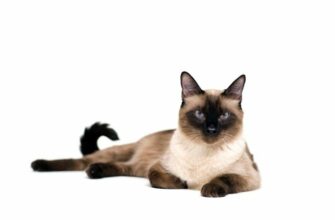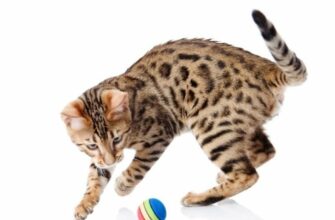King Charles Spaniel is a popular pedigree dog who also goes by the name of English Toy Spaniel, Prince Charles Spaniel, Ruby Spaniel, and Blenheim Spaniel. These dogs weigh between 3.6 and 6.4 kg and are between 23 and 28 cm in height. The lifespan of King Charles Spaniel is around ten to twelve years and is common to many pedigree dogs; they can experience health problems as a result of selective breeding, which is done to meet the standard of the physical type of their breed.
Physical Features of the King Charles Spaniel
The King Charles Spaniels is a small dog with a unique dome-shaped head. They have large dark-colored eyes, black skin around their lips, and a short nose. Their coats are long and straight and tend to be one of the following color patterns:
- Black and tan or mahogany
- White with chestnut or red markings (known as Blenheim)
- Entirely chestnut (known as Ruby)
- White with black and tan patches
Cavalier King Charles Spaniels
King Charles Spaniels often get mixed up with Cavalier King Charles Spaniels, or Cavaliers, which are a similar breed with several differences. They diverged from one another about a hundred years ago. In comparison to King Charles Spaniels, Cavalier King Charles Spaniels are larger and weigh more. Although they have similar facial features, Cavaliers tend to have flat skulls, higher ears, and longer muzzles. They are also a much more popular breed today.
The Temperament and Personality of the King Charles Spaniel
Kings Charles Spaniels are affectionate lapdogs who make good pets, as they enjoy spending time with their families. They are friendly but may bark at visitors on occasion, although they are usually very quiet dogs, making them suitable for living in apartments. However, these dogs should not be left alone for long periods.
Children and Other Pets
King Charles is usually fine with other pets, as they are loving and affectionate. They do not always get on well with smaller pets because of their instinct to hunt smaller prey. They are good with children, although they don’t tolerate being handled roughly. It is always best practice to educate children on how to behave properly around all dogs.
The History of the King Charles Spaniel
Although the name makes them sound like they come from Britain, King Charles Spaniels are believed to have originated in East Asia. The breed is based on toy dogs from Japan and other East Asian countries. These dogs were given to British diplomats as gifts in the 15th century, which is how they arrived in Europe. In the 17th century, toy spaniels grew in popularity, and this is attributed to King Charles II of England. After the late 1600s, King Charles Spaniel underwent significant changes following the introduction of the pug to England. By 1093, King Edward VII stated that they should be called King Charles Spaniel.
King Charles Spaniels at Work
King Charles Spaniels do not tend to be working dogs, although they have, on occasion, been used for hunting in the past. However, they are not suitable for this purpose as other spaniels and small gun dogs. King Charles Spaniels and Cavalier King Charles Spaniels can be used as dogs for therapy and nursing homes because of their gentle temperament and good nature.
Health Problems and King Charles Spaniels
Selective breeding has led King Charles Spaniel to be prone to numerous health conditions such as cataracts, distichia (irritation of the eye from the eyelashes), anatomical issues, and various diseases of the cornea. The breed also has related heart conditions, which can lead to heart failure. They are also susceptible to diabetes, umbilical hernia, and cleft palate, as well as knee problems.
Feeding King Charles Spaniels
King Charles Spaniels should be fed in accordance with their weight and breed type. King Charles Spaniels will probably need 1-1.5 cups of dry food or cans of wet food or a combination of the two. Although they can be active dogs, they are still prone to becoming obese, so it is important to ensure that they get the right diet. You should also monitor their weight to make sure that they are eating the right amount of food.
Grooming for King Charles Spaniels
As with other dogs with longer coats, King Charles Spaniels require a good amount of grooming. They need brushing every day to get rid of any tangles and to stimulate oil production for a healthy coat. Their hair and nails will need cutting every six weeks. A professional dog groomer can do this, or owners can take a dog grooming course. Regular grooming is also beneficial to check for any lumps and bumps that might require a trip to the vet.
The popularity of King Charles Spaniels
Nowadays, King Charles Spaniels are not as popular as their close relatives, Cavalier King Charles Spaniels. Cavaliers rank as the 19th most popular dog in the UK and 23rd most popular in the U.S., whereas King Charles Spaniels are 116th most popular in the UK and 126th most popular in the US.

 Home
Home Health
Health Diet & Nutrition
Diet & Nutrition Living Well
Living Well More
More
